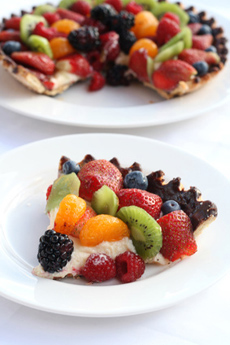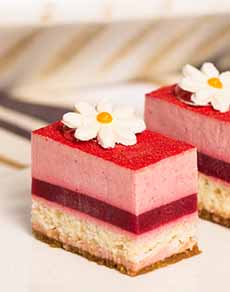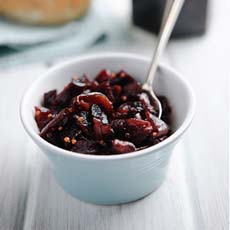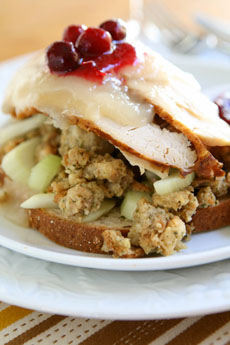
[1] A fruit-topped Bavarian cream pie (photo © J. Java | Fotolia).

[2] Bavarian Cream, or crème bavarois, is prepared in a mold and unmolded onto a serving plate (photo © Massimiliano Pieraccini | iStock Photo).

[3] This layered raspberry bavarois is, from top down, raspberry bavaroise, raspberry compote, and coconut dacquoise, atop a crunchy almond cookie crust (photo © Detoni).
|
|
November 27th is National Bavarian Cream Pie Day. Before there was Bavarian Cream Pie, there was crème bavarois—Bavarian Cream, an early 19th century dessert credited to the great chef, Marie-Antoine Carême (photo #2). It was called bavarois, for short.
Bavarian cream is a dessert consisting of milk thickened with eggs and gelatin, into which whipped cream is folded. The mixture sets up in a cold mold, is chilled, and unmolded for serving.
It can also be made with crème anglaise (a pourable custard sauce) combined with gelatin, beaten egg whites, and lightly whipped cream (see the different types of custard).
The cream mixture can be flavored with vanilla, fruit purée, chocolate, liqueur, etc. It is then poured into a decorative or plain.
Photo #2 is an example of a Bavarian cream in a plain mold, but is handsome nonetheless.
THE HISTORY OF BAVARIAN CREAM PIE
While the connection to Bavaria is obscure, Marie-Antoine Carême (1784-1833) created great dinners for royalty and others at the top of society, so the dessert may well have been created to honor guests from Bavaria.
As with custard and other foods originally served in a dish, at a point lost in history, some chef poured the custard cream* into a pie crust to create Bavarian Cream Pie.
Bavarian Cream Pie is one of a variety of cream pies. Simply stated, the cream—be it banana cream, Bavarian cream, chocolate cream, coconut cream, whipped cream, etc.—is added to a pie shell.
The pie can be served unadorned, topped with shaved chocolate or chocolate sauce, or, as in two of the photos, topped with fresh fruit.
Note that not everything called “Bavarian cream” is the real deal.
Real Bavarian cream does not pipe smoothly because of its gelatin content. In the U.S., some products called “Bavarian cream” pie, and certainly Bavarian cream doughnuts, are actually filled with a version of a crème pâtissière (pastry cream).
Pastry cream is not the same as Bavarian cream. Pastry cream uses different ingredients such as butter, cornstarch and milk instead of gelatin, heavy cream, and egg yolks. Bavarian cream is much richer with more depth of flavor than pastry cream.
So the pastry cream versions are “faux” Bavarian Cream Pie. But you may enjoy them all the same.
CREAM VS. CREME: THE DIFFERENCE
What’s the difference between creme and cream? Why do some people write “creme pie” instead of “creme pie?”
Crème, pronounced KREHM, is the French word for cream. In America, French recipes were served at the tables of the wealthy, many of whom knew how to pronounce French properly.
As these recipes entered the mainstream, people who did not know French began to pronounce crème (KREHM) as cream (KREEM). Some people dispensed with the accent mark, to provide a mashup of French and English, and either became acceptable.
But to display your erudition, when discussing a French dish, e.g. Crème Brûlée, use crème; when discussing an American dish, e.g. Chocolate Cream Pie, use cream.
Check out the different types of pie in our delicious Pie Glossary.
________________
*Bavarian cream is not the same as custard. It is a lightened up custard cream.
|








